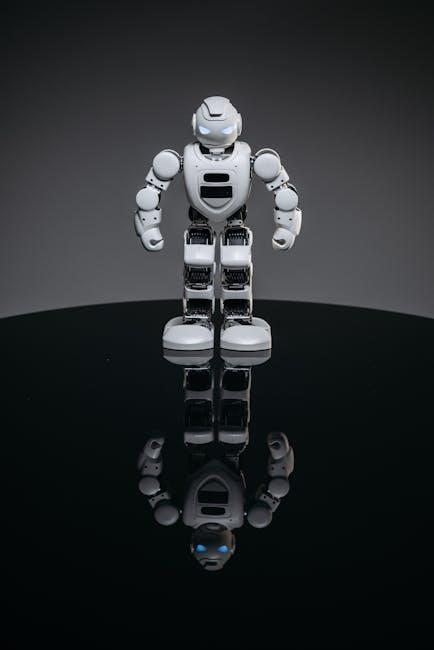In the ever-evolving landscape of cinema, where technology continually reshapes the boundaries of storytelling, motion capture has emerged as a revolutionary force in character creation. Once confined to the realm of science fiction, this cutting-edge technique now breathes life into fantastical creatures and digital avatars, blurring the lines between reality and imagination. As actors don sleek suits adorned with sensors, their every movement is translated into a symphony of data, allowing filmmakers to craft characters with unprecedented depth and authenticity. This article delves into the transformative impact of motion capture on the art of character creation, exploring how it enhances narratives, challenges traditional acting, and redefines the viewer’s experience in the world of film.
Revolutionizing Realism: The Art of Motion Capture in Cinema
The art of motion capture has transformed how filmmakers bring characters to life, pushing the boundaries of realism in cinema. By capturing the subtle nuances of human movement, this technology enables creators to infuse digital characters with unprecedented depth and authenticity. Motion capture allows for a seamless blend of live-action and animation, providing a canvas for actors to perform complex emotions that translate directly onto their digital counterparts.
Some of the key benefits include:
- Enhanced Expressiveness: Actors can deliver performances that are rich in detail, capturing every gesture and facial expression.
- Versatility: It allows for the creation of characters that transcend the limitations of practical effects, from fantastical creatures to historical figures.
- Cost-Effectiveness: Reducing the need for extensive makeup and prosthetics, it streamlines production processes.
- Immersive Storytelling: By offering more realistic and relatable characters, audiences can engage more deeply with the narrative.
This evolution in character creation has not only enriched the visual tapestry of films but has also expanded the creative horizons of storytellers, enabling them to explore new realms of imagination.

Breathing Life into Pixels: Techniques for Authentic Character Creation
In the realm of digital storytelling, the quest for authenticity is paramount. Motion capture technology has emerged as a game-changer, enabling creators to infuse characters with life-like nuances. By capturing the intricate dance of human movement, this technology transcends traditional animation, allowing artists to craft characters that resonate with genuine emotion and depth. Imagine a dragon that not only soars but breathes with a rhythm that echoes its heart, or a mythical creature whose gaze holds a world of untold stories. These are not mere animations; they are embodiments of human expression.
- Realism: Motion capture captures every subtle twitch and gesture, translating them into digital avatars.
- Emotion: Facial recognition technology ensures characters reflect authentic human emotions.
- Efficiency: Streamlines the animation process, reducing time while maintaining quality.
By bridging the gap between actor and animation, motion capture technology allows filmmakers to explore new dimensions of storytelling. Characters are no longer confined by the limitations of hand-drawn or keyframe animation; they are dynamic, evolving entities that interact with their worlds in unprecedented ways. As a result, audiences find themselves drawn into narratives where the line between reality and fantasy blurs, experiencing stories with unparalleled immediacy and impact.

The Actors Digital Double: Balancing Human Emotion and Technology
The fusion of human performance and digital artistry has given rise to a new era in filmmaking, where actors’ movements are meticulously captured to breathe life into digital characters. This synergy between technology and human expression allows for the creation of characters that resonate with audiences on a profound emotional level. Motion capture, or mocap, enables actors to impart their unique emotional nuances into digital avatars, preserving the essence of their performance while expanding the possibilities of character design.
To achieve this balance, filmmakers focus on several key elements:
- Authenticity: Ensuring the actor’s performance is faithfully translated into the digital realm.
- Innovation: Utilizing cutting-edge technology to enhance the realism and depth of characters.
- Collaboration: Seamless teamwork between actors, directors, and animators to align vision and execution.

Crafting Compelling Characters: Best Practices for Motion Capture Integration
In the realm of film, integrating motion capture into character development requires a blend of technology and artistry. Motion capture allows filmmakers to infuse characters with a level of realism and emotional depth that was previously unattainable. To effectively harness this technology, creators should focus on the following best practices:
- Authenticity in Performance: Capture genuine human movements by collaborating closely with skilled actors. This partnership ensures that characters exhibit natural and relatable behaviors.
- Detail-Oriented Design: Pay attention to the subtleties of motion. Small gestures, like a character’s slight head tilt or a hand movement, can significantly enhance their believability.
- Seamless Integration: Work with technical artists to ensure that the captured data blends smoothly with the digital environment, maintaining consistency in lighting and textures.
- Iterative Feedback Loop: Regularly review motion capture footage with the creative team. This collaborative approach allows for timely adjustments and improvements.
By implementing these practices, filmmakers can create characters that not only move convincingly but also resonate emotionally with audiences, elevating the storytelling experience.

